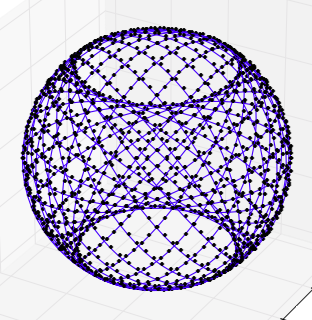The first group of the five groups that comprise the 4425 satellites in the initial StarLinkStarlink constellation has been lowered from 1150 km to 550 km and redistributed. There are now a quarter less planes and a quarter more satellites in each plane, such that the *along-track distance has been shrunk.
This may be why "SpaceX told the FCC in November 2018 in its application for a license modification (found in Ars Technica's SpaceX cuts broadband-satellite altitude in half to prevent space debris) that:
Apogee and perigee will be maintained to within 30 km, and inclinations will be maintained to less than 0.5 degree of the respective target values. The right ascension of the ascending nodes (RAANs”) will precess and span the full range of 0-300 degrees. In addition, SpaceX has designed orbits that feature large self-conjunction miss distances, meaning that, in order to ensure that two SpaceX satellites will never collide, SpaceX satellites need only maintain a position with a tolerance no larger than 60 km along-track in the worst case, or even greater distances at earlier stages of the roll-out. It is unlikely that this full along-track margin will ever be used, but these highly conservative tolerances further improve the robustness of the SpaceX system. Despite these large system tolerances, however, SpaceX will maintain extremely accurate information about the location of each satellite, and make this information available to other operators through its shared ephemeris data.
above: Before and After (first of five groups of planes)
below: from Technical Informatio.pdf found at application for a license modification (found in Ars Technica's SpaceX cuts broadband-satellite altitude in half to prevent space debris)


